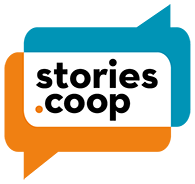A local chemist has a clear picture of a community’s health needs. In 2004, Brian Frith, the chemist in Charnwood, on Canberras northern fringe, compared notes with the organiser of the Neighbourhood Watch group, Roger Nicoll, and with Michael Pilbrow, the chair of his primary schools Parents and Citizens Committee. All three were concerned that across six northern suburbs, with a high proportion of public housing, there was not one practising GP.
A series of public meetings, and a survey of 8000 homes, settled on a co-operative as the best model for providing primary health care. Over several years the community developed the concept with the help of a feasibility study and business plan, drawn up by a practice management consultant and partly funded by a state grant. Australias first-ever community medical co-operative, Melbournes Westgate Health Co-op, gave vital encouragement and practical support.
With further start-up funding from both corporate sources and State and Federal Government, the West Belconnen Health Co-operative opened for business in January 2010, with just one doctor. Two years later, Michael Pilbrow, by then the chair of the co-ops board, could report that they employed 10 doctors at three sites, and that 12,000 local people and families were registered co-operative members.
Anybody can join the co-op. They pay $66 per year for a family or $33 for an individual, and that’s halved if anyones got a Healthcare card. That gives them unlimited free medical consultations. We want to give people a fully professional medical experience, so our premises are very similar to a private medical practice. There’s no lowering of standards, says Michael.
Apart from the prominent co-operative signage and the invitation to new patients to become members, West Belconnen looks and runs much like any busy suburban medical centre. At its main site, about half the space is used for clinical care, and a range of allied and social services uses the rest. As well as doctors, we have psychologists, pathology, a youth health nurse who works with at-risk kids and homeless teenagers. There are various community health services like breast-feeding support and aged care.
The co-ops community includes many low-income people, migrants and refugees, and Michael says it faces some specific and severe health problems. Recurring issues are a high degree of chronic illness, substance abuse and mental health problems. As a co-operative we try to respond by involving our members in healthy activity. The staff has arranged an obesity health and exercise program. Theres also a walking group for heart patients. Several of the doctors have language skills that make them more approachable to recent migrants. Our doctors seem to like the idea of being part of a membership-owned practice. There’s a great spirit among the staff.
Michael points out that the co-op is simply reviving a form of healthcare delivery that was common in early 20th century Australia, but disappeared with the introduction of fee-for-service medicine. He thinks it’s an idea whose time has come again. We stand ready to support any group that wants to set up something like this, as long as they have their local community behind them. Healthcare is an area where co-ops can work.
Australia IYC 2012 story from “Building a better Australia – 50+ stories of co-operation”, Focus Publications
